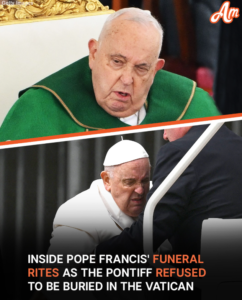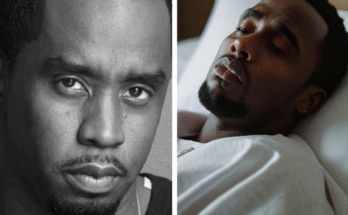Pope Francis, known for his commitment to humility and simplicity, has made significant revisions to the traditional papal funeral rites, reflecting his desire for a more modest ceremony and a departure from long-standing customs. Notably, he has expressed his wish to be buried outside the Vatican, specifically in the Basilica of St. Mary Major in Rome.
Simplification of Funeral Rites
In November 2024, Pope Francis approved a new edition of the “Ordo Exsequiarum Romani Pontificis,” the liturgical book detailing the funeral procedures for a pope. This updated version emphasizes a simplified approach, aligning with Francis’ vision of the papal role as primarily pastoral rather than monarchical. The revisions were influenced by his observations during the funeral of his predecessor, Pope Benedict XVI, in 2023. He tasked Monsignor Diego Ravelli, the Vatican’s master of ceremonies, with reviewing and updating the rites to better reflect this pastoral focus.
One significant change in the revised rites is the handling of the pope’s body after death. Traditionally, the body would lie on a decorated platform known as a catafalque. Under the new guidelines, the body will be placed directly into a coffin, which remains open until the night before the funeral. This adjustment aims to simplify the viewing process and reduce the ceremonial grandeur previously associated with papal funerals.
Departure from Vatican Burial Tradition
Breaking with centuries of tradition, Pope Francis has expressed his desire to be buried outside the Vatican. In a December 2023 interview, he revealed plans to be laid to rest in the Basilica of St. Mary Major in Rome’s Esquilino neighborhood. This basilica holds personal significance for Francis; he has visited it over a hundred times, often praying before and after his international trips in front of the revered image of the Virgin Mary and baby Jesus.
This decision marks a notable shift from the customary practice of burying popes within the confines of St. Peter’s Basilica or its adjoining grottos. By choosing St. Mary Major, Francis underscores his commitment to a more accessible and less ostentatious papacy, focusing on service and humility.
Health Considerations and Preparations
As of February 2025, Pope Francis, aged 88, has faced significant health challenges, including a severe bout of double pneumonia leading to early signs of kidney failure. Despite his critical condition, he has remained alert and engaged, even attending Mass during his hospitalization. These health issues have prompted the Vatican to initiate preparations for his potential passing, including rehearsals for his funeral rites. Such proactive measures ensure that the Pope’s wishes for a simplified ceremony and specific burial location are respected and executed accordingly.
Implications for the Catholic Church
Pope Francis’ choices regarding his funeral and burial reflect a broader theological and pastoral message. By simplifying the papal funeral rites and opting for a burial site outside the traditional Vatican setting, he emphasizes the themes of humility, service, and closeness to the people. These decisions may influence future practices within the Church, encouraging a move away from opulence and towards a more grounded expression of faith and leadership.
In summary, Pope Francis’ revisions to the papal funeral rites and his personal burial preferences signify a deliberate move to align the Church’s highest ceremonies with the core Christian values of humility and service. These actions not only honor his personal convictions but also set a precedent for future leaders of the Catholic Church.
